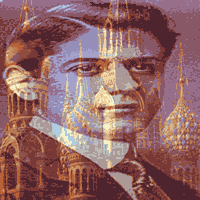Jose Raul Capablanca - Human Chess Machine
by Vidya
(India)
The origin of geniuses takes place in the world and they became wonders. Jose Raul Capablanca is such a genius who specialized in chess. He was a Cuban chess player. He was born on 19 November 1888 in Havana, Cuba and died on 8 March 1942 at New York City, in the United States. During this small span of life, he achieved a lot in his chess career. Jose Capablanca was the second surviving son of his parents. His father was a Spanish army officer. His father was fond of chess so Jose learned the rules of chess at the age of 4. Not only that, but at the age of 4, he beat his father twice. At the age of 8, he became a member of Havana Chess club, which had conducted a lot of important contests. In 1901 he beat the Cuban chess champion Juan Corzo.
In 1905, He passed the entrance examination for Columbia University, New York, joining an engineering course and in the same year he joined the Manhattan Chess Club which helped him to become well-known as the strongest player in the club. After a few years, his financial support was withdrawn as he preferred chess to studying engineering. He also liked to play baseball. He was the World Chess Champion from 1921 to 1927. He gained the title of Grandmaster. During the first portion of his chess career Capablanca had to face some criticisms mainly from Britain for his reveled description in his first book My Chess My Career. So it is clear that he is very frank.
During the World War I, Capablanca won tournaments in New York in 1914, 1915, 1916, and 1918. He lost only one in this sequence. In 1918 Frank James Marshall opposed Capablanca by using a counter attack. It was later known as Marshall Attack and Marshall had kept this secret for use against Capablanca since his defeat in their 1909 match. He was famous for his exceptional endgame skill. Also renowned for the speed of play. He had a simple style of play during the games. So he got a nickname as “Human Chess Machine”.
There are a lot of notable games he played. Some of them are as follows:
1.Capablanca vs Molina, Buenos Aires in 1911, the specialty of which is a great Greco’s sacrifice along with deceptive simplicity and effortless endgame.
2.Capablanca vs Marshall, ch Manhattan CC, in New York 1918 is a good example of defending against an aggressive attack.
3.Capablanca vs Spielmann, New York in 1927 is a remarkable tactical game.









